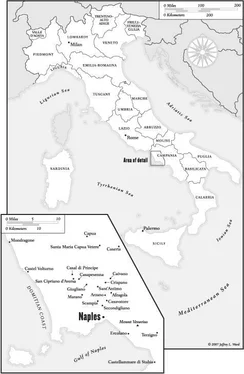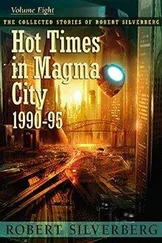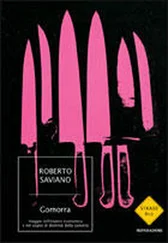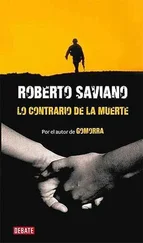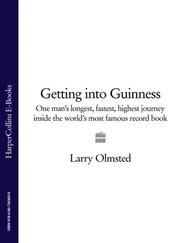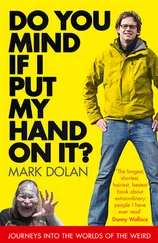Roberto Saviano - Gomorrah - A Personal Journey into the Violent International Empire of Naples’ Organized Crime System
Здесь есть возможность читать онлайн «Roberto Saviano - Gomorrah - A Personal Journey into the Violent International Empire of Naples’ Organized Crime System» весь текст электронной книги совершенно бесплатно (целиком полную версию без сокращений). В некоторых случаях можно слушать аудио, скачать через торрент в формате fb2 и присутствует краткое содержание. Жанр: Старинная литература, на английском языке. Описание произведения, (предисловие) а так же отзывы посетителей доступны на портале библиотеки ЛибКат.
- Название:Gomorrah: A Personal Journey into the Violent International Empire of Naples’ Organized Crime System
- Автор:
- Жанр:
- Год:неизвестен
- ISBN:нет данных
- Рейтинг книги:5 / 5. Голосов: 1
-
Избранное:Добавить в избранное
- Отзывы:
-
Ваша оценка:
- 100
- 1
- 2
- 3
- 4
- 5
Gomorrah: A Personal Journey into the Violent International Empire of Naples’ Organized Crime System: краткое содержание, описание и аннотация
Предлагаем к чтению аннотацию, описание, краткое содержание или предисловие (зависит от того, что написал сам автор книги «Gomorrah: A Personal Journey into the Violent International Empire of Naples’ Organized Crime System»). Если вы не нашли необходимую информацию о книге — напишите в комментариях, мы постараемся отыскать её.
Gomorrah: A Personal Journey into the Violent International Empire of Naples’ Organized Crime System — читать онлайн бесплатно полную книгу (весь текст) целиком
Ниже представлен текст книги, разбитый по страницам. Система сохранения места последней прочитанной страницы, позволяет с удобством читать онлайн бесплатно книгу «Gomorrah: A Personal Journey into the Violent International Empire of Naples’ Organized Crime System», без необходимости каждый раз заново искать на чём Вы остановились. Поставьте закладку, и сможете в любой момент перейти на страницу, на которой закончили чтение.
Интервал:
Закладка:
Aberdeen felt like home, though this Scottish city couldn’t have been more different from Mondragone. The third-largest city in Scotland, dark, dirty, and gray, but it rains less than in London. Before the Italian clans arrived, Aberdeen didn’t know how to exploit its resources for recreation and tourism, and the restaurant, hotel, and entertainment businesses were organized in the sad English manner. The same old thing, people packed into pubs once a week. According to the Naples anti-Mafia prosecutor, it was Antonio La Torre, Augustos brother, who set up a series of commercial activities in Scotland, which in the space of a few years became the feather in the cap of Scottish entrepreneurship. Most La Torre clan activities in Britain are perfectly legal: acquisition and management of properties and businesses, commerce in foodstuffs with Italy. Enormous turnover, difficult to place a figure on. In Aberdeen, Matteo sought everything he’d been denied in Italy. We walked around feeling pleased; for the first time in our lives being from Campania seemed sufficient to guarantee some measure of success. At 27/29 Union Terrace, I found myself in front of Pavarotti’s, a restaurant registered in Antonio La Torre’s name and listed on tourist websites. Aberdeen had become chic, an elegant address for fine dining and important dealings. At Italissima, the gastronomic fair held in Paris, clan businesses even marketed themselves as the height of Made in Italy. Antonio La Torre advertised his own brand of catering activities there. His success had made him one of the top Scottish businessmen in Europe.
Antonio La Torre was arrested in Aberdeen in March 2005. There was an Italian warrant for his arrest on account of Camorra criminal conspiracy and extortion, but for years his British citizenship and the fact that the authorities did not recognize his alleged crimes shielded him and he had been able to avoid extradition. Scotland didn’t want to lose one of its most brilliant entrepreneurs.
In 2002 the Court of Naples issued preventive-detention orders for thirty people connected to the La Torre clan. It emerged that extortion, contracts, and control of economic activities were bringing in vast sums of money, which the clan then invested overseas, particularly in Britain, where an actual clan colony had formed. The colonists hadn’t invaded or introduced bearish competition in the workforce; instead they infused the city with economic energy, revitalized the tourist industry, inspired new import-export activities, and injected new vigor in the real estate sector.
The international energy from Mondragone was personified by Rockefeller. That’s what people here call him because of his obvious talent for making deals and his control of vast sums of money. Rockefeller is Raffaele Barbato, sixty-two years old, a native of Mondragone. Maybe even he has forgotten his real name. He has a Dutch wife, and until the late 1980s he did business in Holland, where he owned two casinos that drew international big shots, such as the brother of Bob Cellino, who’d set up casinos in Las Vegas, and Miami-based, Slavic Mafiosi. His partners were a certain Liborio, a Sicilian with Cosa Nostra connections, and Emi, a Dutchman who later moved to Spain, where he opened hotels, residences, and discos. According to Mario Sperlongaro, Stefano Piccirillo, and Girolamo Rozzera—all pentiti —it was Rockefeller, together with Augusto La Torre, who hatched the idea of going to Caracas to try to meet Venezuelan narcotraffickers, whose coke prices beat those of the Colombians who supplied the Neapolitans and Casalesi. And it was Rockefeller who found a comfortable place for Augusto to sleep when he went into hiding in Holland: the skeet-shooting club. Even though he was far from the Mondragone countryside, the boss could keep in shape firing at flying clay pigeons. Rockefeller had an enormous network. He was one of the best-known businessmen not only in Europe but also in the USA; through his gambling houses he made contacts with Italian-American Mafiosi who were slowly being squeezed out by the Albanian clans taking over in New York. As a result the Mafiosi were increasingly allied to Campania Camorra families and eager to traffic in drugs and invest in European markets, restaurants, and hotels through Mondragone’s open door. Rockefeller is the owner of Adam and Eve, renamed La Playa, a beautiful holiday village on the Mondragone coast, where, according to the magistrates, many fugitive affiliates vacationed. The more comfortable the hideout, the less the temptation to turn state’s witness and put an end to life on the run. La Torre was fierce with pentiti. Francesco Tiberio, Augusto’s cousin, phoned Domenico Pensa, who had testified against the Stolder clan, and in no uncertain terms invited him to leave town.
“I heard from the Stolders that you collaborated against them. Given as how we don’t want informants in this town, you’d better get out of Mondragone or else someone will come and cut your head off.”
Augusto’s cousin had a knack for making terrorizing telephone calls to whoever dared collaborate with the authorities or leak information. With Vittorio Di Tella, he was more explicit, inviting him to purchase his funeral suit.
“If you have to talk, you’d better buy yourself a black shirt, fucker, because I’m going to kill you.”
Before clan affiliates started turning state’s witness, no one would have imagined the vast scope of Mondragone dealings. One of Rockefeller’s friends was a certain Raffaele Acconcia. Like Rockefeller, he was born in Mondragone but moved to Holland, where he owned a restaurant chain and, according to pentito Stefano Piccirillo, was an important international drug trafficker. The La Torre treasure is still hidden somewhere in Holland, perhaps in a bank—millions of euros the magistrates have never been able to locate, taken in through mediation and commerce. In Mondragone this alleged stash in a Dutch bank has become a symbol of absolute wealth, trumping all other references to international riches. People no longer say, “He thought I was the Bank of Italy,” but, “He thought I was the Bank of Holland.”
With backing in South America and Holland, the La Torre clan planned to take over cocaine traffic in Rome. All Caserta families consider the capital city an extension of their province, and Rome has become the number one spot for drugs and real estate investments. The La Torres counted on the supply routes along the Domitian coast; the villas there were essential for contraband cigarettes and all sorts of merchandise. The actor Nino Manfredi had a villa there. Clan representatives went and asked him to sell it. Manfredi resisted in every way he could, but clan pressure intensified; his house was located on a strategic point for mooring the motorboats. They stopped asking him to sell and forced him to hand it over at a price they set. Manfredi even appealed to a Cosa Nostra boss, disclosing the story to Radio News 1 in January 1994, but no Sicilian stepped in to mediate against the powerful Mondragonesi. Only by going on TV and attracting national media attention was he able to make known the pressure the Camorra applied for the sake of strategic interests.
Drug traffic followed on the heels of other commercial routes. Enzo Boccolato, a cousin of the La Torres’ and owner of a restaurant in Germany, decided to export clothing. Together with Antonio La Torre and a Lebanese businessman, he purchased clothing in Puglia—the Campania garment industry was already monopolized by the Secondigliano clans—and resold them in Venezuela through a middleman, a certain Alfredo, who investigations indicated was one of the most important diamond traffickers in Germany. Thanks to Campania Camorra clans, diamonds—which have significant price fluctuations but always maintain a nominal value—quickly became the asset of choice for money laundering. Enzo Boccolato was known in the Venezuela and Frankfurt airports, where he had protectors among the merchandise inspectors, who probably not only did not check the clothing shipments, but were also preparing a giant cocaine network. It might seem that the clans, once they’ve accumulated substantial capital, would stop their criminal activities, unravel their genetic code somehow, and convert to legality. Just like the Kennedy family, who had earned enormous amounts selling liquor during Prohibition and later broke all criminal ties. But the strength of Italian criminal business lies precisely in maintaining a double track, in never renouncing its origins. In Aberdeen this system is called scratch. Like the rappers and DJs who put their finger on the record to keep it from spinning normally, Camorra businessmen momentarily stop the movement of the legal market, scratch, then make it spin even faster.
Читать дальшеИнтервал:
Закладка:
Похожие книги на «Gomorrah: A Personal Journey into the Violent International Empire of Naples’ Organized Crime System»
Представляем Вашему вниманию похожие книги на «Gomorrah: A Personal Journey into the Violent International Empire of Naples’ Organized Crime System» списком для выбора. Мы отобрали схожую по названию и смыслу литературу в надежде предоставить читателям больше вариантов отыскать новые, интересные, ещё непрочитанные произведения.
Обсуждение, отзывы о книге «Gomorrah: A Personal Journey into the Violent International Empire of Naples’ Organized Crime System» и просто собственные мнения читателей. Оставьте ваши комментарии, напишите, что Вы думаете о произведении, его смысле или главных героях. Укажите что конкретно понравилось, а что нет, и почему Вы так считаете.
